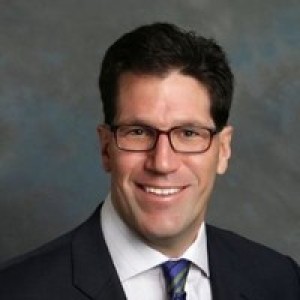- Video Library
- Keith Warner Presents NeuraLace Medical at LSI Europe '23
Keith Warner Presents NeuraLace Medical at LSI Europe '23

Keith Warner
Proactive and engaging leader with expertise in advanced strategy development and implementation driving outstanding corporate growth. Over 25 years of senior level business acumen gained through key executive positions with leading large cap to venture stage startups within the life sciences and medical technology sectors. Experience in organization-building geared to achieve near and long term milestones both in domestic and international settings. Ability to deliver significant transformation and growth in financial performance, product development, investor fundraising, capital restructuring, P&L management, and strategic planning. Recognized successes in the distressed business turnaround process. Key achievements included:
As Public Company COO:
• Extensive background in P&L management; restructured world-wide commercial operation while achieving Wall Street revenue target of $6M, while producing all-time best quarterly revenue performances overall and in high-growth China market; successfully gained entry into the $1B molecular blood typing market by partnering with a prestigious U.S. independent blood bank.
As CEO:
• Rebuilt organization around re-focused value proposition in medical oncology while restructuring Board and raising new capital; generated key large CAP pharma partnerships based on compelling milestones to support transition through court process; arranged Series B financing with credible investors following court approved sale.
As VP of Global Marketing:
• Delivered and implemented new marketing strategies through market focused tactics and tools, along with overall product and market positioning for large cap industry leader supporting growing revenue results over a two-year period (up to 16%) along with operating income above 20% on total product revenues exceeding $400M; key driver was geographic expansion through key xUS studies, KOLs, and tender strategies.
Keith Warner
Proactive and engaging leader with expertise in advanced strategy development and implementation driving outstanding corporate growth. Over 25 years of senior level business acumen gained through key executive positions with leading large cap to venture stage startups within the life sciences and medical technology sectors. Experience in organization-building geared to achieve near and long term milestones both in domestic and international settings. Ability to deliver significant transformation and growth in financial performance, product development, investor fundraising, capital restructuring, P&L management, and strategic planning. Recognized successes in the distressed business turnaround process. Key achievements included:
As Public Company COO:
• Extensive background in P&L management; restructured world-wide commercial operation while achieving Wall Street revenue target of $6M, while producing all-time best quarterly revenue performances overall and in high-growth China market; successfully gained entry into the $1B molecular blood typing market by partnering with a prestigious U.S. independent blood bank.
As CEO:
• Rebuilt organization around re-focused value proposition in medical oncology while restructuring Board and raising new capital; generated key large CAP pharma partnerships based on compelling milestones to support transition through court process; arranged Series B financing with credible investors following court approved sale.
As VP of Global Marketing:
• Delivered and implemented new marketing strategies through market focused tactics and tools, along with overall product and market positioning for large cap industry leader supporting growing revenue results over a two-year period (up to 16%) along with operating income above 20% on total product revenues exceeding $400M; key driver was geographic expansion through key xUS studies, KOLs, and tender strategies.

17011 Beach Blvd, Suite 500 Huntington Beach, CA 92647
714-847-3540© 2025 Life Science Intelligence, Inc., All Rights Reserved. | Privacy Policy







